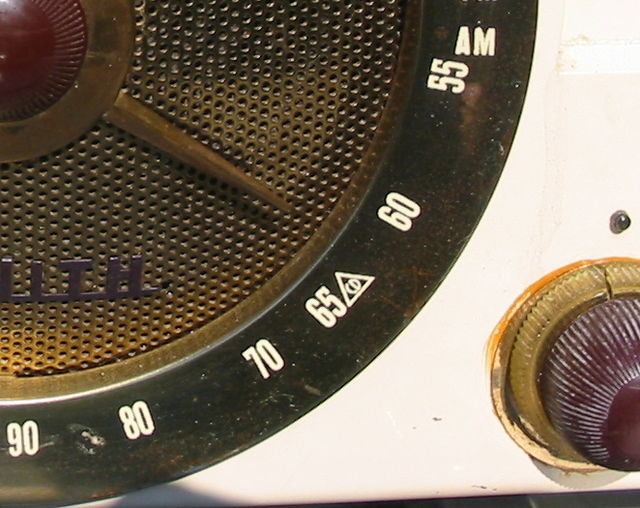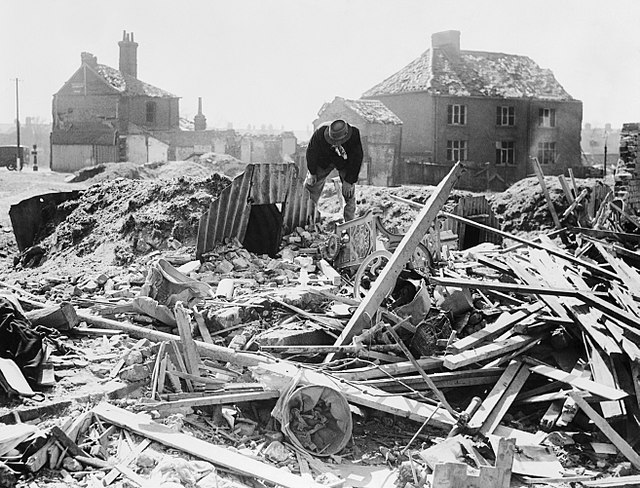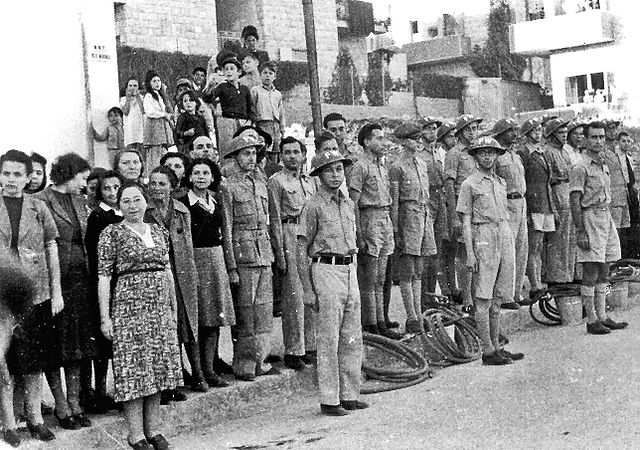CONELRAD was a method of emergency broadcasting to the public of the United States in the event of enemy attack during the Cold War. It was intended to allow continuous broadcast of civil defense information to the public using radio stations, while rapidly switching the transmitter stations to make the broadcasts unsuitable for Soviet bombers that might attempt to home in on the signals.
"CD Mark" symbols (usually simple white or red triangles) at CONELRAD's 640 and 1240 kHz frequencies were on the dials of most radios sold in the US between 1953 and 1963.
Cold War-era CONELRAD poster.
Car radio with CONELRAD frequencies marked with small red marks
First commercial transistor radio Regency TR-1 with small red dial markings
Civil defense or civil protection is an effort to protect the citizens of a state from human-made and natural disasters. It uses the principles of emergency operations: prevention, mitigation, preparation, response, or emergency evacuation and recovery. Programs of this sort were initially discussed at least as early as the 1920s and were implemented in some countries during the 1930s as the threat of war and aerial bombardment grew. Civil-defense structures became widespread after authorities recognised the threats posed by nuclear weapons.
British First World War poster, bringing attention to the threat posed by aerial bombardment from German Zeppelins
Air Raid Warden testing his equipment in Brisbane in October 1942
Anderson shelters were widely distributed in the United Kingdom by civil defense authorities, in preparation for aerial bombardment.
Jewish Civil Defense group in Jerusalem in 1942. The group served as ARP Fire Wardens, equipped with water hoses and buckets, some wearing FW (Fire Watcher) Brodie helmets. Men are in uniform while women wear plain clothes. Composer Josef Tal stands next to the woman with a black sweater.








